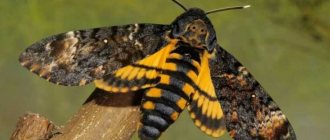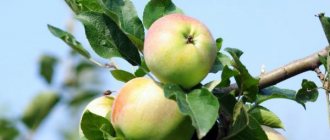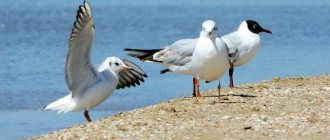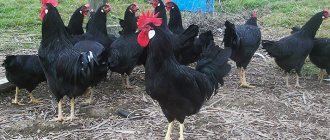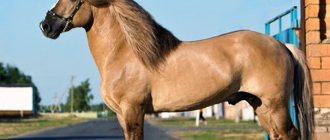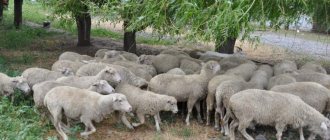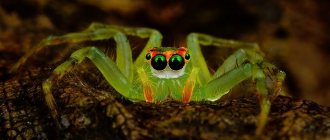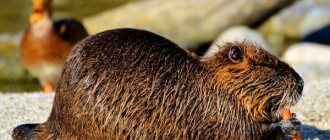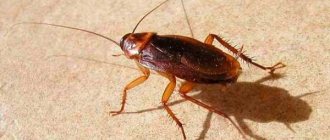Many residents who have their own backyard keep geese. Among poultry, geese occupy one of the leading positions. These birds are very easy to keep, bring great benefit in providing tasty meat and soft down, and are also a source of such a valuable product as liver. They are not picky when feeding and keeping them.
Caring for them is very simple and does not require much physical effort or special knowledge. The main thing is to take care of the growth of the livestock and take care to improve living conditions.
These birds are the main characters or participants in various epics, fairy tales, proverbs and stories. Looking at pictures from fairy tales or photographs of successful private farmsteads and prosperous collective farms, you can often see domestic geese in the foreground.
About geese
As long as human history can remember, there has been so much room on its pages for memories of geese. It is believed that this bird was first domesticated in the northern and central European parts, and then the goose spread throughout the European and part of the Asian continents. On the American continent, the ancestor of the goose is the goose from Canada, and on the Asian continent, the knobby Chinese goose.
Over the history of development and improvement, domestic geese have changed little in appearance from their ancestors. Over the years of keeping geese at home, breeders have managed to increase their weight, improve the quantity and quality of down, and also increase their ability to lay eggs.
The domestic goose is a large waterfowl. She has strong legs, a strong beak and a long neck. Color depends on the breed. Puberty reaches ten months.
The goose is a herd bird. The chosen leader of the herd always leads and protects his charges. Geese get along well with other poultry.
The leader of a goose flock can subjugate the entire bird population of a residential farmstead and ensure the observance of order among the livestock entrusted to him.
Domestic geese live from eighteen to twenty-five years. This life expectancy can be achieved:
- organization of special meals;
- providing walking on pastures and reservoirs;
- creation of favorable conditions of detention.
Geese are calm by nature, but when they see a threat, they can show aggression, but only while protecting themselves or the herd. They eat plant foods, so geese raised on paddocks do not create feeding problems. If there is a small pond near the meadow, then this is an ideal place for them.
They have a well-developed memory, they know their nesting place and can find their way to the compound on their own. This bird does not require special living conditions. The main thing is to provide her with the opportunity to walk through meadows and lawns.
There are about 20 species of geese in the world. Each type has its own specific characteristics.
Rare specimens
Black geese are not often bred. Outwardly they resemble small ducklings. They belong to the geese. We are talking about the northern families of ducks. The color is rich, black predominates. There are also birds with a white stripe on the neck. These geese have rather short legs, but the body looks elongated.
They grow small in size. Representatives of this breed are mainly found in North America. These are migratory birds; before the onset of cold weather they move to Denmark or England.
Geese breeds
Every person planning to breed geese is faced with the question for the first time: “what breed of geese to choose?” It is definitely difficult to answer this question. The choice is influenced by many factors, determined both by the natural conditions of the area and the purpose of the future livestock.
To help you choose the breed of domestic geese on your own, here is a brief description of the most common breeds.
Lindovskaya
According to experts, it is considered the best among this type of poultry. Grown in Germany, France, and the Hungarian Republic. In the Russian Federation, the population of this bird is equal to half of the country's goose population.
Goslings at 3 months weigh about 4 kilograms. They eat fresh greens. From the age of one and a half months, goslings can be grazed in meadows. Lindovsky geese are very good hens.
- Geese breeds are the most popular and productive breeds for breeding and growing at home (115 photos and videos)
Treatment of goslings - the main types of diseases and their treatment at home. Recommendations from veterinarians for disease prevention (115 photos + video)
- Domestic goslings - conditions of keeping, rearing and care rules. Breeding tips for beginners (100 photos and videos)
Qualitative indicators:
- average weight of an adult bird (kg) - 8;
- number of eggs laid (pcs.) - 50;
- egg weight (g) - 140-170;
- Fertility - 90;
- average hatchability (%) - 75-80.
Large gray
Bred in the Ukrainian Republic. Most often found in the Russian Federation, the Republic of Belarus and the Republic of Ukraine.
The bird quickly gains weight, is unpretentious to food, has high fertility and resistance to disease. Geese of this species are good brood hens. The disadvantage of the bird is its vindictiveness and aggressiveness.
Qualitative indicators:
- average weight of an adult bird (kg) - 9-9.5;
- number of eggs laid (pcs.) - 60;
- egg weight (g) - 175-220;
- Fertility - 90-92;
- average hatchability (%) - 76-88.
Common diseases
The Kholmogors have no significant health problems. Their immunity is quite strong, and they themselves are very hardy. Diseases most often arise due to improper maintenance and are of two types: contagious and non-contagious.
Contagious
- Aspergillosis. Respiratory tract fungus. Caused by mold spores introduced into the body through breathing and eating. Infection often occurs due to untimely replacement of bedding in the poultry house. The disease threatens death from suffocation. Treat with a solution of copper sulfate and nystatin. Antibiotics are not allowed.
- Colibacillosis. Infectious inflammation of the intestines. Accompanied by diarrhea and a significant decrease in body weight. Direct threat of death from dehydration. Treated with antibiotics.
- Pasteurellosis, or bird cholera. One of the most dangerous diseases of birds. Causes high mortality. Sick birds are destroyed. Those infected are treated with antibiotics. The premises are being disinfected and anti-epidemic measures are being taken.
- Salmonellosis. Accompanied by high mortality among young animals. Treat with furazolidone, antibiotics, sulfonamides. Mandatory disinfection of the premises.
Non-contagious
- Poisoning. They arise due to poor quality feed. Accompanied by diarrhea, vomiting, cramps, restless behavior.
- Leaf-eating parasites. They destroy the plumage of geese, cause loss of feathers and down, and contribute to the formation of “bald patches.”
- Rickets. Causes softening of bones. It is a consequence of a serious lack of vitamins in the diet.
- Prolapse of the oviduct in geese. Occurs due to the large size of the eggs. Accompanied by inflammation and fever. Treatment is surgical.
Measures to strengthen the immune system of goslings will also be very helpful. One of these measures is feeding young animals with a solution of potassium permanganate and glucose.
Obroshinskaya
Characterized by precociousness and exquisite taste of meat. They have wonderful fluff. Not picky about food. Geese graze on all green pastures and lands.
Qualitative indicators:
- average weight of an adult bird (kg) - 6.5-7;
- number of eggs laid (pcs.) - 50;
- egg weight (g) - 160;
- Fertility - 90;
- average hatchability (%) - 70-80.
Chinese
Primarily used to increase egg production. The body is of medium size with a developed chest. They can find the necessary food themselves. The meat of these geese has excellent taste.
They do not require special placement and maintenance conditions. Geese do not have a high maternal instinct.
Geese Linda: description, maintenance, breeding and main characteristics of the breed (85 photos + video)What to feed goslings - instructions for beginners on how to properly feed chicks at home
Diseases of geese - causes, main symptoms and methods of treatment. Fight and prevention against the most dangerous diseases (105 photos)
Qualitative indicators:
- average weight of an adult bird (kg) - 4.5-6;
- number of eggs laid (pcs.) – 70-100;
- egg weight (g) – 130-170;
- Fertility – 80;
- average hatchability (%) - 75-80.
Tula bird
A breed with a low egg production rate, and the weight of geese reaches up to 6 kg. But Tula geese are valued for their fighting qualities. Animals are not difficult to breed, because they are able to withstand not only severe frosts, but also extreme heat. They can withstand all conditions, but you need to carefully monitor their nutrition - excess weight can cause a fighter to lose shape.
Romenskaya
Divorced in the Republic of Ukraine. They hatch well and are easy to fatten. The meat is tender and has a good taste. Adapt well to various natural environments.
Qualitative indicators:
- average weight of an adult bird (kg) - 4.5-5;
- number of eggs laid (pcs.) – 20;
- egg weight (g) – 150;
- Fertility – 80;
- average hatchability (%) – 60.
Toulouse
The bird is not very mobile and cannot feed on pastures. It is bred to obtain liver, which is the best raw material for making pates. The young animals are very picky about their maintenance and are afraid of drafts and cold.
Qualitative indicators:
- average weight of an adult bird (kg) - 9-15;
- number of eggs laid (pcs.) - 30-40;
- egg weight (g) - 170-200;
- Fertility – 20-30;
- average hatchability (%) – 60.
Italian
Large bird, but smaller than Toulouse. The goslings quickly gain weight. 2-month-old goslings can weigh 3 kilograms. Goose meat has a pleasant taste.
As a rule, geese are fattened to acquire liver. They are not picky about their contents and tolerate climate change well.
Qualitative indicators:
- average weight of an adult bird (kg) - 6-7;
- number of eggs laid (pcs.) - 47-60;
- egg weight (g) – 160;
- Fertility – 90;
- average hatchability (%) – 70.
Shadrinskaya (Ural)
The breed has been known for more than 300 years, bred in the Perm region. They are poorly productive birds, but are often used as a basis for the development of new breeds.
Ural geese have a small short body and small dimensions. The body is slightly lowered down, the paws are short but wide. Depending on the variety, the plumage color can be gray, piebald or white. There is a light-colored fat fold on the abdomen.
Males reach 6.5 kg in weight at adulthood, females weigh no more than 5 kg. The young quickly gain weight, growing to 5 kg by 2 months. In one season, the goose lays up to 30 large eggs and has a developed brooding instinct.
Birds of this breed feel best when kept on pasture; raising them in aviaries is not recommended. They adapt to unfavorable climatic conditions and are suitable for breeding in the harsh conditions of the Urals and Siberia.
Kubanskaya
Meat breed of geese. Already in two-month-old chicks, meat becomes nutritious. They have valuable fat and liver. They have a strong body with a very large head. Geese do not have a strong maternal instinct. Adapts well to negative temperatures.
Qualitative indicators:
- average weight of an adult bird (kg) - 5.5;
- number of eggs laid (pcs.) - 70-90;
- egg weight (g) - 140-160;
- Fertility - 80;
- average hatchability (%) - 85.
Pros of business
Geese are valued primarily for their meat. They rarely lay eggs. No special dietary properties for the human body were found in this product. The eggs taste like chicken eggs. As for meat, the first slaughter can be done within two months after the start of walking. On one hectare of pasture it is quite possible to raise livestock that will produce two tons of product per year. The herd grazes from early spring to late autumn. Livestock can be slaughtered periodically throughout the season, as needed. There is no need to store large quantities of meat. It goes fresh directly to the consumer. The farmer does not need to buy refrigeration and freezers.
In terms of profitability, raising geese is comparable to the profitability of selling beef and pork. Moreover, the latter is still the lowest in cost. The most valuable thing in a goose carcass is the liver. It is considered a delicacy. Special breeds of geese have been bred whose livers are large and have a special, refined taste. Another source of income for the farmer is fluff. Their clothes are insulated. In terms of its properties, it is comparable only to eider down. The price of goose insulation is much more affordable.
A few more advantages of these birds:
- they rarely get sick;
- in terms of nutrition, these birds are not picky;
- They eat everything the same as ordinary poultry.
Kholmogorskaya
They have a large body with a developed chest. Birds are not fussy about care and are actively gaining weight. Their meat has a pleasant taste and high-quality fat.
Geese are accustomed to independent grazing and are resistant to various diseases. Geese are wonderful hens. Two-month-old goslings can reach four kilograms.
Qualitative indicators:
- average weight of an adult bird (kg) – 10;
- number of eggs laid (pcs.) - 30-45;
- egg weight (g) – 200;
- Fertility – 50;
- average hatchability (%) – 90.
Egg representatives
Geese - they eat little, citizens do not trust them due to the presence of diseases, microbes and even worms. The fact is that most farmers use the wrong breed. Therefore, the quality and demand for eggs is low.
If we discard all prejudices, then they are possible and even necessary. They contain a huge amount of protein and minerals that help restore immunity and overall health. Nutritionists even recommend replacing chicken ones with them, they are more filling.
In order not to burn out in this business, the following breeds are distinguished:
- Kuban - not found in the wild. Breeders bred it 100 years ago, for court celebrations and daily food for the nobility. They give about 100 pieces a year. The birth rate is 80%, this is a stable and positive indicator. The geese are small, calm, and have no unpleasant odor. There is an interesting characteristic - you can recognize it by the presence of a small dark bag above the beak.
- Chinese - the name speaks for itself. The difference is that there is a bump on the forehead; it is quite easy to recognize the species. It does not produce as many eggs as the previous species - 75 pieces, but the bird has dietary and tender meat.
Before you are convinced that a goose egg is no worse than a chicken egg, you need to check it. If there are no dents or cracks, then when broken it will not give off an unpleasant odor. The specimen is more filling due to the size of the protein; the average for the selected species is 115 grams.
Danish Legart
One of the best breeds for breeding for meat and fluff. These birds have a medium build. Unpretentious to food. The survival rate of goslings is high, they quickly gain weight; three-month-old chicks can weigh about 7 kg.
Has very high quality down. In a year, one bird can produce five hundred grams of fluff. Requires care when maintained. Afraid of cold and drafts.
Qualitative indicators:
- average weight of an adult bird (kg) - 7-8;
- number of eggs laid (pcs.) – 40;
- egg weight (g) - 200;
- Fertility - 65;
- average hatchability (%) - 50.
Purchase of goslings and care
You need to purchase healthy, active goslings from trusted suppliers. They need to be kept in a dry, temperature-controlled room with a dry microclimate. In the first week of life, the temperature should be at 30-32°C, the second – 25-28°C, the third – 22-25°C. Starting from 21 days, young individuals are able to do without heating. It is important to change the flooring every day and keep it dry. During the first days, the goslings are fed finely ground eggs and given enough water. From the 3rd day, porridge and various greens are added. From the 3rd week you can let them out for free range and feed them with cereals.
If you expect to receive high-quality meat and a sufficient number of eggs, then the herd needs to be provided with a comfortable existence. A goose is a waterfowl, it loves freedom and if there is not enough of it, it will grow and fly worse. Only when raised for fatty liver should the geese's movement be limited. And in this case they often die. It should be noted that when walking in the field, these birds are able to find the greens they need for their diet. In such conditions it is easier for them to fight parasites and infections.
Feeding
To raise these birds, it is important to know what and how to feed domestic geese. In summer, when walking poultry on rich pastures near water bodies, practically no additional nutrition is required. It is important to understand that water is very important for the goose to consume.
For every kilogram of food eaten, it consumes about 4 liters of water. This consumption of water helps speed up the metabolism in the body.
In the summer food portion of these birds, fresh greens take up about 2 kilograms. During dry seasons, in places with poor vegetation, birds must be fed with solid feed.
Top dressing should be up to 70g. for 1 individual. On average, to raise a goose until slaughter, it will take about fifteen kilograms of solid feed to feed it.
As a rule, geese are fed in the evening. If the geese are not taken to the meadow, then they are provided with green grass in the pen, and feeding is carried out in the morning and evening, with a wet mixture and grain feed, respectively.
Birds kept in the poultry yard in the autumn-winter period are fed:
- bone and clover meal;
- grain of barley, oats and wheat;
- yeast;
- Buryak;
- bran.
By the time of puberty, one hundred grams of sprouted oats are added to the gander’s food and the amount of grain is increased to 80% per head. 20% of food is plant food.
In winter, it is advisable to give pine needles, branches of deciduous trees, and acorns. Winter preparation of feed for 1 individual is up to 35 kilograms of feed and up to 15 kilograms of hay.
Interesting Facts
Let's look at some interesting facts about birds. Few people know how long geese live. With proper care, the life expectancy of these birds is 20 years. But until this age, almost no one keeps geese, since egg production decreases significantly with age, and the meat of old birds is tough.
Although the bird that lives at home is not particularly eager to be released, do not forget that geese can fly, so it is worth clipping its wings, otherwise in the spring you may lose your feathered pets.
The maximum weight of a domestic goose recorded to date is about 12 kg. Even some world records were set by geese. So, for example, a goose can withstand frost of -110°C. Not a single animal in the world, not even a polar bear, is able to withstand such low temperatures. There is also a record related to age. The lifespan of one bird from Great Britain was almost 50 years.
A wild goose flies at an average speed of 75 km/h. Maximum flight speed is 90 km/h. And if the flight range is far from the record values of other birds, the height is impressive: these flyers rise 8-9 km. Such indicators allow geese to fly over the Himalayas. Before departure, the birds gather in flocks and, after having rested, set off. The air temperature over the Himalayas drops to -40°C, which makes flying over them difficult. But the birds successfully overcome all difficulties, following a leader who knows the area, after which they stop to rest and only then continue on their way. It is noteworthy that birds fly without a map, and at the same time never lose their way.
Meat for slaughter
The most profitable way to raise geese is to raise them for slaughter for meat. To prevent the quality of domestic goose meat from deteriorating, you need to know when and how to slaughter it.
A bird that is on its own, fed only natural food and has gained good weight, can be slaughtered at 7 months.
Geese raised on mixed feed can be slaughtered at 3 months, by which time they gain weight up to 4 kilograms.
Birds fed on mixed feed are ready for slaughter after five months.
Being in the open air, good nutrition and water have a beneficial effect on the development of goose meat. It has virtually no fat. Goose liver is a delicacy product; pates are made from it.
Goose fat is also very valuable. Meat and fat help remove toxic elements and radioisotopes from the body. Eating goose meat helps strengthen the human immune system.
Systematic consumption of this meat and goose by-products has a beneficial effect on the health of the human body.
The level of hemoglobin increases, the functions of the gallbladder are restored, the amount of cholesterol decreases and sugar is normalized, a person’s resistance to stress and nervous overload increases.
This food is good for children, pregnant and lactating women.
Some features of caring for geese in winter
To keep geese in the autumn-winter period, as well as in early spring, it is necessary to equip a goose coop.
Requirements for equipping a goose barn:
- at least 1 m2 of floor space per head of the herd;
- air humidity should be 60-70%;
- eliminate the possibility of drafts;
- prepare bedding for the floor of the poultry house;
- equipment for a watering place with running water;
Cleaning of the poultry house should be regular. Since geese's feet can quickly become cold, wet bedding should be changed immediately to ensure they are in a clean environment and prevent the possibility of illness.
In one room, the goose barn contains up to 25 individuals, of which 20 are geese and the rest are drakes. Relocation to poultry houses is carried out until December. The ganders are selected to be of strong build with distinct breed characteristics.
Domestic geese are fed in winter to create a future goose flock and fatten it for meat. The poultry is fed with grain crops and a mixture of products. The best grains for this bird are oats and grain mixtures. The batch consists of bran, flour, grain, chopped root vegetables and boiled potatoes.
In the morning they are fed a mixture of products, and in the evening they are fed grains. The house must have sand, chalk or gravel. Geese should be given water at least once a day so that they have the opportunity to wash their beaks.
To speed up the process of laying eggs, additional lighting is installed. Before laying eggs, geese are transferred to full 3 feedings a day.
Each group of geese has an individual walking area. It must be cleared of snow. In good weather, you can feed and water the birds while walking.
Raising geese is very profitable and not burdensome. Anyone who wants to provide themselves and their family with tasty and healthy meat can handle it.
How to create ideal conditions for breeding and maintenance?
Geese do not have great demands on living conditions. A regular poultry house will suit them. The base can be made of wood, brick and other building material. One of the requirements for the place is dryness. The roof must be dense and not allow water to pass through. It is better to make the floor from wood; this is the most suitable material for this bird. Nests should be located along the edges of the building, away from feeding and drinking areas. Adequate ventilation and building area should be ensured. If the flock feels discomfort, the geese will lay eggs worse and the ganders will behave aggressively.
